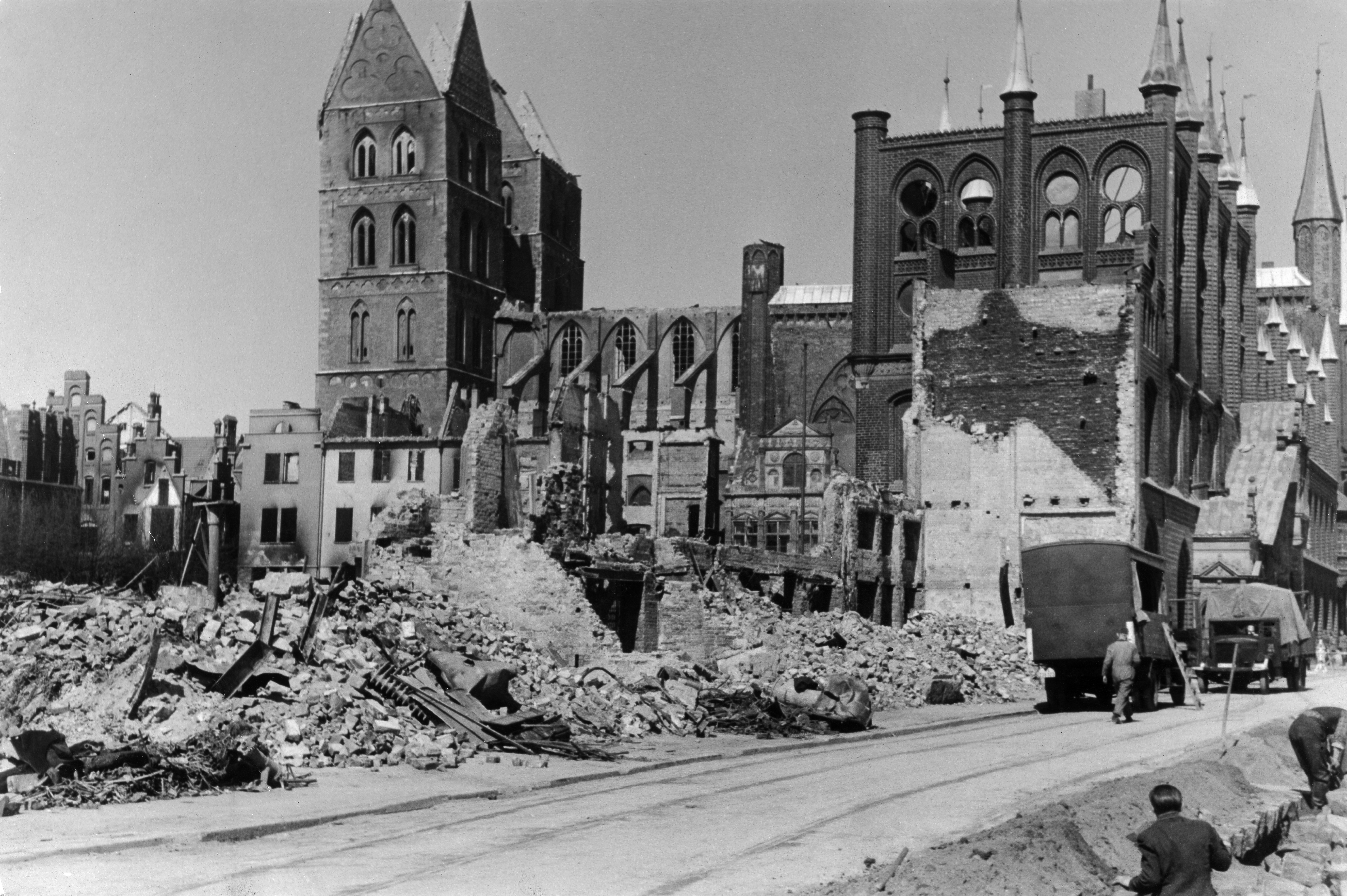If candy corn doesn’t strike your fancy this Halloween, how about a perfectly preserved “nut cake” that was recently found in the German town of Lübeck?
In September, researchers found the artifact in the basement of a home that had collapsed following the devastating Royal Air Force raid on the town in the evening hours of March 28-29, 1942.
While the hazelnut-and-almond dessert is a touch charred and may still contain traces of phosphorus and other chemicals due to the bombing, the sweet treat is eerily preserved as a result of a hollow “form[ing] under the rubble that prevented the cake from getting too much heat and being crushed,” Manfred Schneider, head of the archeology department of the Hanseatic City of Lübeck, told the German outlet Deutsche Presse-Agentur (DPA).
“Possibly the pastry was intended for a confirmation ceremony. Those used to take place mostly on Palm Sunday,” said Schneider. “We hope that we can clarify this with the help of the city archives at some point.”
The RAF raid on Lübeck was carried out in retaliation for a 1940 Nazi bombing raid on the English city of Coventry, according to Dirk Rieger, head of the Department of Archaeology for the Hanseatic City of Lübeck Historic Monuments Protection Authority.

By the spring and early summer of 1942, the Ruhr had become the “primary goal” of the British bombing policy, however, the town of Lübeck served another purpose.
In the words of Air Marshal Arthur ‘Bomber’ Harris, Air Officer Commanding RAF Bomber Command:
The main object of the RAF attack on Lübeck was to learn to what extent a first wave of aircraft could guide a second wave to the aiming point by starting a conflagration. I ordered a half an hour interval between the two waves in order to allow the fires to get a good hold…. Lübeck was not a vital target, but it seemed to me better to destroy an industrial town of moderate importance than to toil to destroy a large industrial city…. I wanted my crews to be well, “blooded” as they say in fox hunting, to have a taste of success for a change.
A high proportion of incendiary bombs were used in the Lübeck raid, in which 304 Germans were killed and 5,000 homes destroyed.
“[N]o German city has ever before been attacked so severely from the air,” Nazi propaganda minister Joseph Goebbels wrote in his diary after the attack. “Conditions in parts of Lübeck are chaotic.”
In retaliation less than a month later, the Germans launched their own series of devastating attacks— dubbed the “Baedeker” raids after the famous German travel guides — that targeted historic British cities of relatively low strategic importance. Ultimately 1,637 British civilians were killed with more than 50,000 houses destroyed.
Despite the carnage, the cake, albeit blackened with soot, miraculously managed to come through the Lübeck bombing relatively unscathed — with its shriveled swirls of icing still clearly visible and intact.
“The cake find is so special because it goes back to an event — namely the bombing raid on Lübeck — that is always present in the consciousness of the city,” says Doris Mührenberg, who is in charge of the Lübeck Archeology magazine.
Conservators are currently working to permanently preserve and display the charred cake, which provides an intimate window into the daily lives of German civilians during the war.
Once on display people “will hopefully see not only the destruction of the war but also the joy that people had,” Rieger told Live Science. “Because this was a family celebration, they listened to music, they wanted to have a nice cup of tea, they wanted to have this cake. It’s a very intimate situation that was immediately destroyed by this war.”





